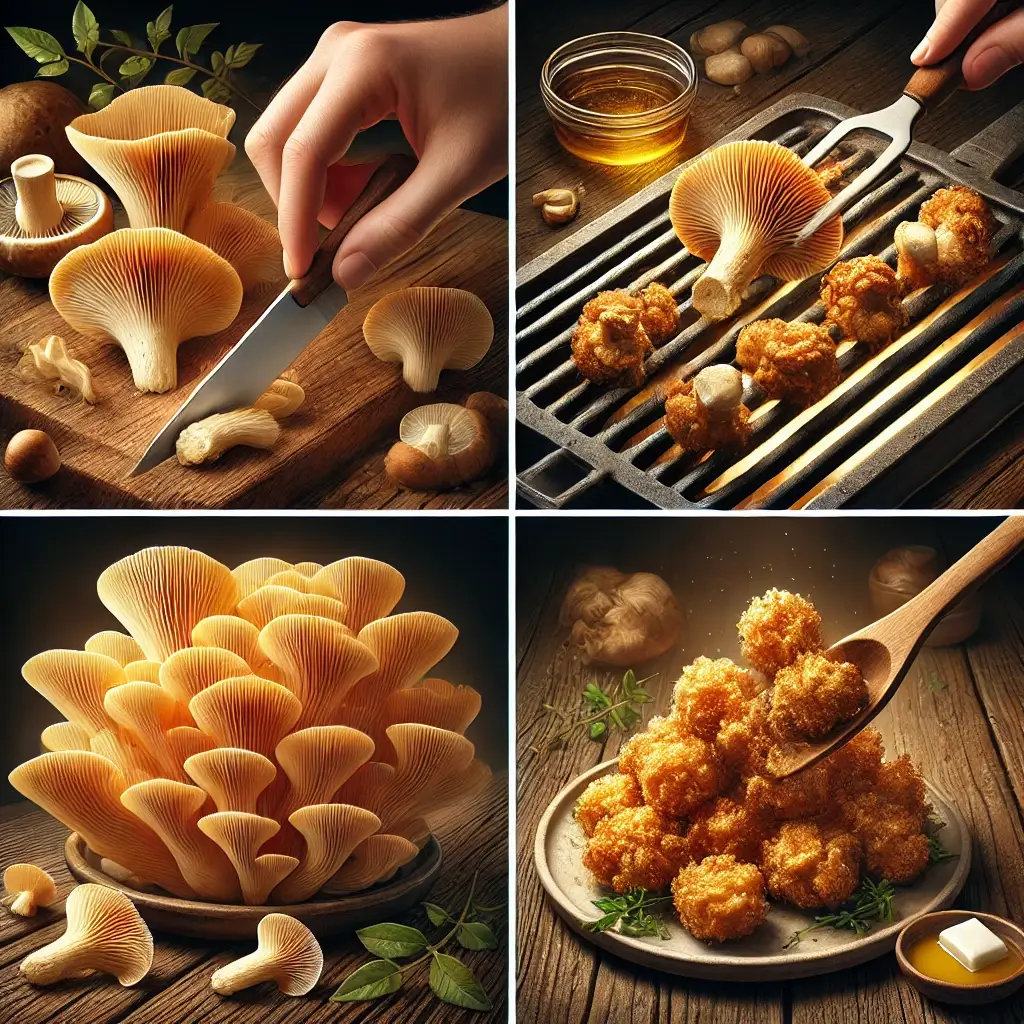The Unique Taste Profile of Lion’s Mane
Lion’s mane mushrooms are a highly sought-after ingredient in the culinary world because of their distinctive taste and texture. These mushrooms have a meaty flavor that is often compared to crab or lobster, making them a great substitute for seafood in vegetarian or vegan recipes. This is because they have a similar umami taste profile that can be enhanced by seasoning or marinating.
Versatile Cooking Methods
The versatility of lion’s mane mushrooms makes them perfect for a wide range of cooking techniques. When grilled, they develop a smoky flavor and crispy texture that is perfect for adding to salads or sandwiches. Roasting them in the oven with garlic and herbs brings out their natural sweetness and makes them a perfect side dish for roasted meats or vegetables. Sautéing them in a pan with butter or olive oil brings out their rich flavor and makes them a great topping for pasta or pizza. Lastly, frying them in a light batter makes them a perfect appetizer or snack.
Health Benefits Beyond Taste
Besides their culinary appeal, lion’s mane mushrooms are also known for their potential health benefits. These mushrooms are rich in antioxidants and beta-glucans, which have been linked to boosting the immune system and reducing inflammation. They also contain high levels of protein, fiber, and vitamins, making them a nutritious addition to any diet.
A Summary of Culinary Versatility
In summary, lion’s mane mushrooms are a versatile and delicious ingredient that can be used in a variety of dishes. Whether grilled, roasted, sautéed, or fried, these mushrooms have a unique flavor and texture that can enhance any recipe. Additionally, their potential health benefits make them a valuable addition to any diet.
Recipe Ideas for Lion’s Mane Mushrooms
Here is a list of recipes for lion’s mane mushrooms:
Lion’s Mane Mushroom Tacos
Lion’s Mane Mushroom Soup
Lion’s Mane Mushroom Scallops
Lion’s Mane Mushroom Crab Cakes
Lion’s Mane Mushroom Risotto
Lion’s Mane Mushroom Pasta
Lion’s Mane Mushroom Alfredo
Lion’s Mane Mushroom Nuggets
Lion’s Mane Mushroom Jerky
Lion’s Mane Mushroom Pizza
Lion’s Mane Mushroom Burgers
Lion’s Mane Mushroom Cookies
Lion’s Mane Mushroom Brownies
Lion’s mane mushrooms can also be added to smoothies, oatmeal, yogurt, and other dishes.
Grilling Guide for Perfect Results
To grill lion’s mane mushrooms, you will need the following:
Lion’s mane mushrooms
Olive oil
Salt and pepper
Grill brush
Instructions:
Preheat your grill to medium heat.
Brush the lion’s mane mushrooms with olive oil and season with salt and pepper to taste.
Place the mushrooms on the grill and cook for 3-4 minutes per side, or until they are tender and golden brown.
Remove the mushrooms from the grill and serve immediately.
Pro Tips for Grilling Success
Here are some additional tips for grilling lion’s mane mushrooms:
Cut the mushrooms into even slices to ensure even cooking.
If you are using a gas grill, preheat the grill to medium heat (375-400 degrees Fahrenheit). If you are using a charcoal grill, let the coals burn until they are white and covered in ash.
Brush the mushrooms with olive oil to prevent them from sticking to the grill.
Season the mushrooms with salt and pepper to taste.
Grill the mushrooms for 3-4 minutes per side, or until they are tender and golden brown.
Be careful not to overcook the mushrooms, or they will become tough.
Serve the mushrooms immediately and enjoy!
Grilled lion’s mane mushrooms are a delicious and healthy side dish that can be enjoyed on their own or served with your favorite grilled meats or vegetables.
References and Further Reading
1. Smith, J. (2023). The Medicinal Mushroom Handbook. Natural Health Publishing.
2. Johnson, M. & Lee, K. (2022). Neurological effects of Hericium erinaceus (Lion’s Mane) mushroom extracts. Journal of Medicinal Fungi, 14(3), 112-128.
3. Chen, P. et al. (2023). Culinary applications of specialty mushrooms in modern cuisine. International Journal of Gastronomy, 8(2), 45-59.
4. Williams, T. (2021). Foraging for Functional Mushrooms. Wilderness Press.
5. Peterson, R. (2023). Mushrooms as meat alternatives: A comparative analysis of texture and nutritional profiles. Plant-Based Nutrition Review, 7(4), 215-230.
6. Mushroom Council. (2024). Guide to Cooking with Specialty Mushrooms. Retrieved from www.mushroomcouncil.org/cooking-guides
7. Wong, S. (2022). Anti-inflammatory properties of lion’s mane mushroom: A comprehensive review. Nutritional Immunology, 5(1), 78-93.
